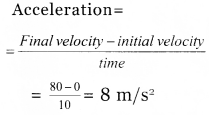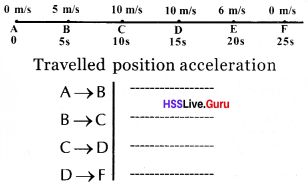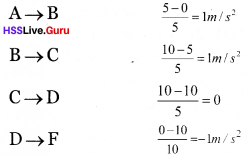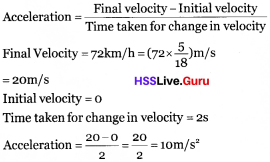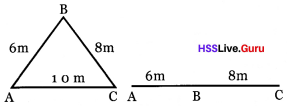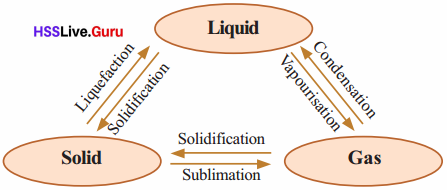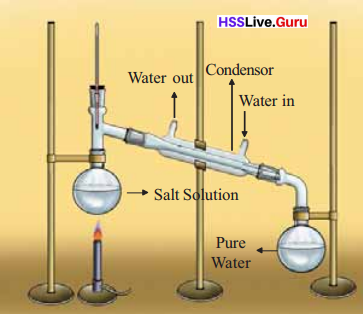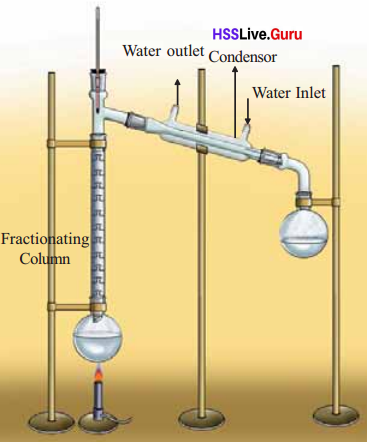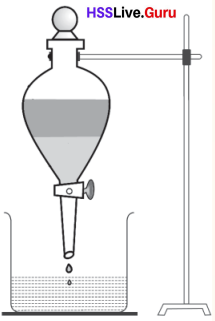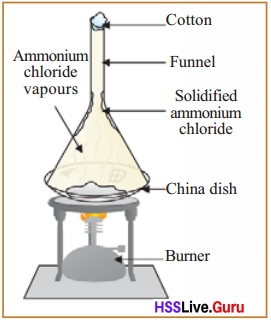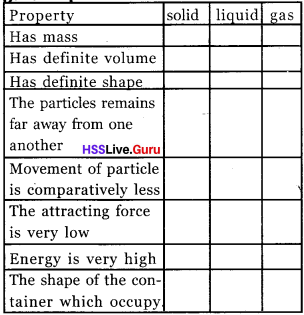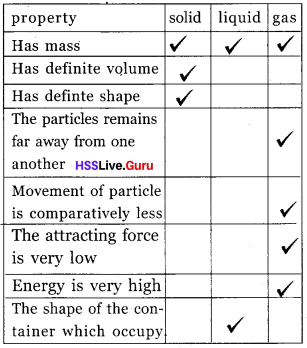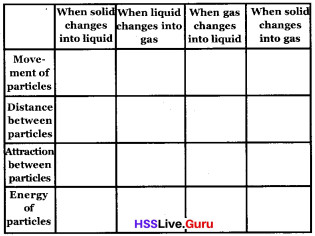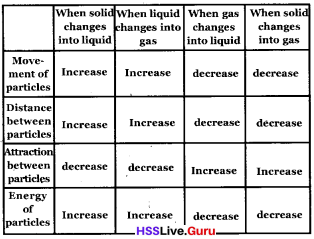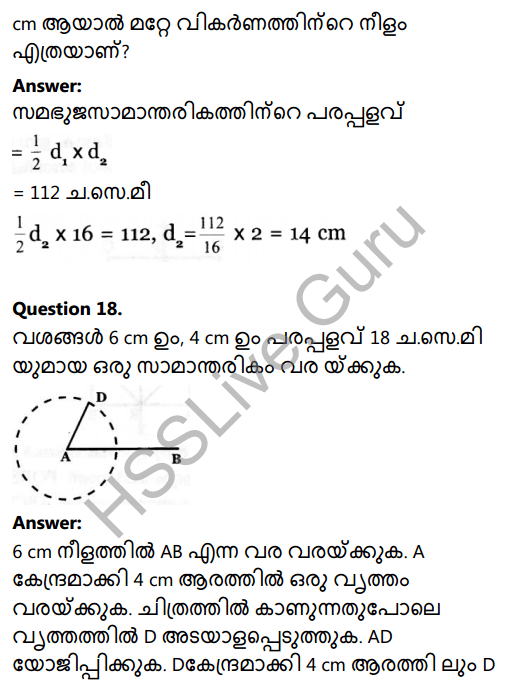You can Download From The School for Sympathy Questions and Answers, Summary, Activity, Notes, Kerala Syllabus 8th Standard English Solutions Unit 5 Chapter 1 helps you to revise complete Syllabus and score more marks in your examinations.
Kerala State Syllabus 8th Standard Hindi Solutions Unit 4 Chapter 1 The School for Sympathy (E.V Lucas)
Std 8 English Textbook From The School for Sympathy Questions and Answers
The School For Sympathy Question Answer Kerala Syllabus 8th Standard Question 1.
Have you visited any other school? What all thing did you find attractive in that school?
![]()
![]()
A Prayer in Spring Questions and Answer:
Invite free responses from the learners.
The School For Sympathy Kerala Syllabus 8th Standard Question 2.
Why, do you think, the writer wanted to visit Miss Beam’s school?

Answer:
Because he had heard a lot about Miss. Beam’s school.
School For Sympathy Question Answers Kerala Syllabus 8th Standard Question 3.
Do you think Miss Beam’s school is different from other schools? How?

Answer:
Yes, their teaching methods were quite different. They taught only those things that are simple and useful to the pupils by giving them interesting tasks.
The School For Sympathy Lesson Plan Kerala Syllabus 8th Standard Question 4.
Is there any hint suggesting that it is a residential school? Identify and write the sentence.

Answer:
Miss. Beam says: “ The bandage is put on overnight, they wake up blind.” This sentence hints that the school is a residential one.
The School For Sympathy Summary Kerala Syllabus 8th Standard Question 5.
What according to Miss Beam, is the real aim of the school?
![]()
Answer:
The real aim of Miss. Beam’s school is to teach thoughtfulness, humanity, kindness and citizenship.
The School Of Sympathy Question Answer Kerala Syllabus 8th Standard Question 6.
What surprised and pained the visitor when he looked out of the window?

Answer:
The visitor realized that the jolly children whom he saw before him were not at all healthy and active. It surprised and pained him
The School For Sympathy Questions And Answers Kerala Syllabus 8th Standard Question 7.
‘ ………….. we make them share in misfortune too’. What does Miss Beam mean by this?

Answer:
In order to make the young minds appreciate and understand misfortune, every child has to observe one blind day, one dumb day and one deaf day.
School For Sympathy Lesson Plan Kerala Syllabus 8th Standard Question 8.
‘It is educative to both of them. ‘Explain how it helps the blind and the helpers.

Answer:
The helpers learn the values of mutual help and compassion and understand the problems of the differently-abled.
School For Sympathy Chapter Question Answers Kerala Syllabus 8th Standard Question 9.
What makes the dumb day the most frightening for the children?
![]()
Answer:
On the dumb day, the child must use his/her will power because the mouth is not bandaged.
The School For Sympathy Summary In Malayalam Kerala Syllabus 8th Standard Question 10.
If you were to observe a day in this way which day, do you think, would be the most difficult? Why?

Answer:
Invite free responses from the learners.
School For Sympathy Summary Kerala Syllabus 8th Standard Question 11.
‘I shall be so glad when today’s over’. Why does the girl feel so?

Answer:
Because the other bad days cannot be half as bad as the blind day. It will be terrible for her not to see.
The School For Sympathy Activities Kerala Syllabus 8th Standard Question 12.
Why does the girl think that having an arm tied up is a little more troublesome?

Answer:
With her own arm tied up, she may not be able to do anything without the help of others. She may need others even to cut up food for her.
The School Of Sympathy Summary Kerala Syllabus 8th Standard Question 13.
Which clues helped the little girl identify Millie?
![]()
Answer:
She was told that the girl was wearing a blue skirt and pink blouse and her hair was very light.
The School For Sympathy Pdf Kerala Syllabus 8th Standard Question 14.
Who are Peter and Berryl in the lesson?
![]()
Answer:
Peter is the gardener and Berryl is a student like the girl.
School For Sympathy Chapter Kerala Syllabus 8th Standard Question 15.
E.V Lucas leaves Miss Beam’s school a wiser man. Do you agree? Substantiate your answer with examples from the story.

Answer:
Yes. E.V. Lucas leaves as a wiser man. He gained a lot of knowledge about the teaching methods and their effectiveness. Besides, he also developed kindness, compassion and love for fellow beings.
The School for Sympathy Textbook Activities And Answers
Let’s revisit
Activity 1.
Read the extracts given below and answer the question that follows by choosing the correct option.
Question 1.
‘It pains me, though to see that they are not all so healthy and active looking.’
i. Who speaks these words?
a. EV Lucas
b. the girl
c. Miss Beam
d. one of the boys
Answer:
E.V. Lucas
ii. These words are spoken to
a. the blind girl
b. the dumb girl
c. Miss Beam.
d. the author
Answer:
Miss Beam
iii. How does the listener react to the statement?
a. The listener agrees with it.
b. The listener becomes sad.
c. The listener gets angry.
d. The listener laughs and tells the truth.
Answer:
The listener laughs and tells the truth.
Question 2.
And so we walked on. Gradually I discovered that I was ten times more thoughtful than I ever thought I could be.’
i. Who are the Sve’ referred to here?
a. the children of Miss Beam’s school
b. the author and his friends
c. the author and Miss Beam
d. the author and the girl the author and the girl
Answer:
The author and the girl
ii. Who is the ‘I’ in the above sentence?
a. the blind girl
b. the dumb girl
c. the author
d. Miss Beam
Answer:
the author
iii. What change came over the author after his visit to Miss Beam’s school?
a. became more careful
b. became more helpful
c. became more proud
d. became more thoughtful
Answer:
became more thoughtful
Activity 2.
Say whether the following sentence are true or false, if false, rewrite them.
Question 1.
The author had been to Miss Beam’s school Several times.
Answer:
false
Question 2.
In Miss Beam’s school, all subjects are taught in detail.
Answer:
false
Question 3.
The children in Miss Beam’s j school are taught to appreciate and understand misfortunes
Answer:
true
Question 4.
The author saw a blind girl being led out by others.
Answer:
true
Question 5.
On the dumb day the mouths of the children are bandaged
Answer:
false
Question 6.
Peter is very old, but not hundreds of years old.
Answer:
true
Activity 3.
Some of the features of a normal school are given below: Read them.
1. Many subjects are taught.
2. Most parents expect their children to learn subjects like Mathematics, Science, etc.
3. Different methods of teaching are adopted.
Now, write about Miss Beam’s school, based on your reading of the text.
……………………………………..
……………………………………..
Answer:
Miss. Beam’s school is very interesting and the teaching methods are very simple. They teach simple and useful things to pupils like spelling, adding, subtracting, multiplying, writing, etc. All the other things are taught by reading and through interesting tasks. Practically no other lessons are given. The real aim of Miss. Beam’s school is to teach thoughtfulness, humanity, kindness, and citizenship.
The children in this school have to observe a blind day, a lame day, a deaf day and a dumb day. It would help the young minds to appreciate and understand misfortunes. The children learn to be helpful to each other and be compassionate. They learn the necessary values required for a peaceful coexistence.
Let’s enrich our vocabulary
Activity 1.
In ‘The school for Sympathy’. EV Lucas describes Miss Beam as ‘middle-aged, authoritative, kind and understanding’. The author uses words to describe her age, appearance, and character, The Jable given below contains words describing the physical features and character of people, Match the items give in the columns


Answer:
| Describing Words | Physical features / Character |
| tall, short, medium | height |
| frail, stocky, slim, thin, plump, fatty, skinny, well-built | build |
| young, elderly middle-aged, teenager | age |
| round, oval, square, wrinkled | face |
| grey, straight, hourly, black, blonde, wavy, bushy | hair |
| big, round, small, bright, narrow | eyes |
| cheerful, aggressive, sensitive, serious, energetic, confident | Character |
Amitabh Bachchan: Amitabh Bachchan is a tall and elderly person with a grey French beard. He has black and wavy hair and an oval-shaped face. He is a well-built man having a serious and energetic appearance.
Sachin Tendulkar: Sachin Tendulkar is a short, well-built and middleaged person. He has curly hair and a round face. He is cheerful and energetic.
Mohammed Rafi: Mohammed Rafi has a long nose and bright and narrow eyes. He is a bald-headed, elderly man having a cheerful and confident look.
Let’s write
Activity 1.
Read the following notice.
THE NIGHTINGALE AND THE ROSE
A PLAY PRESENTED BY THE ENGLISH CLUB
OF G G H S S, CHALAPURAM
Dear friends,
20.01.2016
The English Club of GGHSS Chalapura has decided to stage the one-act play based on the store ‘ The Nightingale and the Rose’ by Oscar Wilde as part of the Annual Day: celebration of the school. The members of the English Club have prepared the script and directed the play. Sri. Kavalam Narayana Panicker, renowned poet and theatre personality has consented to inaugurate the staging of the play.
All are welcome.
Secretary
English Club
GG HSS Chalapuram
Programme Details
Date: 25-1-2016
Time: 04:00 pm
Venue: School auditorium
Welcome speech: Club
Presidential Address: Headmistress
Inauguration: Sri. Kavalam Naayana Panicker
Felicitations: School Leader, Staff Secretary
Vote of thanks: Joint Secretary, English Club
The Health Club of your school has decided to observe the International Day for the Differently Abled on December 3, 2016. As the Convener of the club, you have been asked to prepare a notice including all the relevant details of the programme. Draft the notice.
Answer:
GVHSS CALICUT
NOTICE
Observ ance of International Day
for the Differently Abled
28 November 2016
Dear friends,
The Health Club of GVHSS Calicut has decided to observe the International Day for the Differently Abled on Decem¬ber 3, in the school auditorium. The Health Inspector Mr. Haridas has con¬sented to inaugurate the function.
All are invited.
Sd/
Name
Convenor
Health Club
Programme
Prayer: School choir
Welcome speech: Secretary
Presidential address: Headmaster
Inauguration: Mr. Harikumar (Health Inspector)
Felicitations: School leader, Staff secretary
Vote of thanks: Joint Secretary, Health Club
Activity 2.
Most of us take our lives for granted. Despite being physically fit, we keep complaining and making excuses. And here they are – the differently-abled people, who prove thatykm do not need two hands, legs or eyes to e successful in life. All you need is the will power and determination. Here are a few people, who by means of confidence, faith and courage were able to overcome their physical obstacles and achieve success in their lives, which the healthy people find difficult to do.
1. John Milton
2. Nick Vujicic
3. Sudha Chandran
4. Helen Keller
5. Stephen Hawking
6. Mahakavi Vallathol
Read books or browse related websites to get more information about them. Prepare their profiles.
Answer:
John Milton. (1608 – 1674):
John Milton, the well-known English poet was born at Bread Street in London on December 9, 1608. He had his education in Christ’s College, Cambridge. He was a poet, writer, and a civil servant. His eyesight had been steadily declining for years, most likely the result of untreated glaucoma. By February 1652, he had gone completely blind. He wrote in English, Latin, French, etc. His best-known poem is Paradise Lost. He passed away on November 8, 1674, and was buried in St.Giles-without-Cripplegale. Nick Vujicic: He is an Australian who is best known for his motivational speech. He was born in Melbourne, Australia. He is a graduate in Accounting and Financial planning. He married Kanal Miyahara in 2012. As a child, he struggled mentally, emotionally and physically. He presents motivational speeches worldwide which focus on life with a disability.
Sudha Chandran (1964) :
Sudha Chandran, the famous Indian dancer and actress, was born in Kannur. Kerala on 21 September 1964. She had her M.A. in Economics from Mithibai col-lege, Mumbai. She lost her leg in an accident but overcame the disability with the help of a prosthetic ‘Jaipur Foot’. In 1986 she married Ravi Dang. She is considered one of the most highly acclaimed dancers of the Indian sub-continent. She has won many awards as a dancer as well as an actress. In 1986 she was given the Special Jury Award at the National Film Awards for her performance in Mayuri (Telugu Film).
Helen Keller :
Helen Adams Keller(i88o-i968) was an American author, political activist and lecturer. She was the first deafblind person to earn a bachelor of arts degree. The story of how Keller’s teacher, Anne Sullivan, broke through the isolation imposed by a near complete lack of language, allowing the girl to blossom as she learned to communicate, has become widely known through the dramatic depictions of the play and film ‘The Miracle Worker”. Her birthday on June 27 is commemorated as ‘Helen Keller Day’ in U.S. A prolific author, Keller was well-traveled and outspoken in her convictions.
Stephen Hawking (1942) :
Stephen Hawking the famous British theoretical physicist, cosmologist and author was born on 8 January 1942 in Oxford, England. He had his B. A degree from the University of Oxford and Ph.D. from the University of Cambridge. He suffers from a disease known as motor neuron disease or Lou Gehrig’s disease which has gradually paralyzed him over decades. He works in the fields of General relativity and quantum gravity. His book ‘A Brief History of Time’ was a best seller.
Mahakavi Vallathol Narayana Menon:
Vallathol Narayana Menon was born on 16 October 1878. He was a Malayalam poet. He was one of the triumvirate poets of modern Malayalam, along with Kumaranasan and Ulloor S. Parameswara Iyer. The honorific mahakavi (Great poet) was applied to him in 1913 after the publication of his Mahakavya ‘Chithrayo- ganr. He wrote many poems on various aspects of Indian Freedom Movement. He also wrote against caste restriction, tyrannies, etc. He founded the Kerala Kala Mandalam. He passed away on 13 March 1958 at the age of 79.
Let’s speak
Activity 1.
Fill in the bubbles using the words or phrases which show quality, appearance, and personality of Miss Beam.

Now, speak about Miss Beam using the words or phrases identified.

Now develop a character sketch of j Miss Beam using the above sentence and present it in the class.
Answer:

- Miss Beam is very comforting to homesick children.
- Miss. Beam is a middle-aged woman.
- Miss. Beam’s hair has begun to turn grey.
- Miss. Beam is kind to all, especially to her students.
- She is caring and sympathetic and has an understanding of others’ problems
Miss. Beam: is a middle-aged woman. Her hair shows signs of getting grey. She is kind to all, especially to the students of her school. She is caring and sympathetic towards others. But she has a highly authoritative nature. She is always compassionate to a homesick child
Activity 2.
In Activity 2 of ‘Let’s Write’, you prepared profiles of people who in spite of their disabilities were able to achieve success in life. Prepare a presentation about these differently-abled people. Describe their life, contributions, and other details. Use appropriate photos and posters to support your presentation. Present it before the class.
Let’s discover how grammar works
Activity 1.
Look at the following sentences.
We teach only those things that are simple.
The real aim of this school is not to teach thought but thoughtfulness.
The verbs in the above sentences are in the simple present tense.
Usually, the simple present tense is used to describe actions that are universal or habitual.
The earth revolves around the sun.
They play cricket every Sunday.
Simple present can also be used to show planned future actions.
The train from Alappuzha arrives at 5 p.m.
Now, identify the functions of the simple present tense in the following sentences. One has been done for you.
1. I use my bike to reach school. habitual
2. It rains a lot in Chirapunjee.
3. Sruthi wakes up early.
4. The president visits Srilanka next week.
5. Iron gets rusted easily.
6. They leave the city tomorrow.
Answer:
1. Habitual
2. Factual
3. Habitual
4. Planned future action
5. Universal
6. Planned future action
Activity 2.
Look at the following sentences.
I am reading a book.
Miss Ream is walking up and down the terrace.
An old man is plucking roses.
They are playing football.
He is leaving shortly
Are the verbs in the above sentences similar to those given in activity 1?
What difference do you notice?
These verbs are in the present progressive tense.
What are the major functions of the present progressive tense?
Frame two sentences each showing any two major functions of the pre-sent progressive.
Answer:
1 Action in progress at the time of speaking.
2. Future action that is already planned
e.g:- 1. Action in progress at the time of speaking:
a. Raghu is driving a car.
b. They are waiting for Shyam.
2. Future action
a. She is taking her exam next month.
b. The Prime Minister is coming tomorrow.
Activity 3.
You have already learnt how ahead noun in the noun phrases is expanded by adding certain words/phrases before and after it. You also know the category of words that can be added before and after the head noun, don’t you?
Look how a head noun is expanded by adding these categories of words:
girl
a girl
a smart girl
a smart girl in the school
a smart girl in the school who tied her
eyes
Now, expand the following nouns in the above manner.
a. garden
b. teacher
Answer:
a. garden
a garden
a beautiful garden
a beautiful garden in the school
a beautiful garden in the school where we
play
b. teacher
a teacher
a good teacher
a good teacher in my village
a good teacher in my village who guided
me.
Let’s edit
Read the following passage written by a student of Class VII. There are some errors in it which are underlined, edit the errors.
The writer had hear a lot about Miss Beam’s school. But he had never visit it. One day he got the opportunity to visit it. On entering the campus he see no one except a girl of twelve. Her eyes were covered on a bandage, A little boy of about eight was guiding her between the flower beds in the garden. The girl stopped. She evidently ask her guide about the writer, the boy seemed to describe the writer to her. The writer went into the building and meet the head of the school. Miss Beam was the principal for the school. She was a mother – figure for the young boys and girls in the school. The writer asked Miss Beam some questions of her scholastic methods. Miss Beam said that there was not many scholastic education. The boys were taught spelling, addition, subtraction, multiplication and writing only. The rest was done by reading to them and with lectures. Now, rewrite the passage after editing it.
Answer:
1. Heard
2. visited
3. saw
4. with
5. asked
6. the
7. met
8. of
9. about
10. much
11. through
Let’s play with language
Read the following sentence
The author went around the school to observe how it functions. In the word ‘observe’, another small word is hidden. The word is ‘see’. Look at the word ‘chicken’. Let us write it as Chicken, and put together the letters in capital what do we get? HEN, So we have a shorter word ‘hen’ within the word ‘chicken’.
You have seen the picture of a kangaroo, haven’t you?
Have you seen its baby?
Where does the mother kangaroo carry its baby? in a pouch in its body.
‘Kangaroo words’ are like this animal. They are marsupial words that carry smaller versions of themselves (joey words) within their spellings. They are words that contain other smaller words within them that have the same meaning.
Look at the word ‘Exhilaration’ which means ‘to make someone feel very happy and excited’. Elation is a word that can be formed from this word. What does the word ‘elation’ mean?
Look at some other words too; regulate (rule), indolent (idle), encourage (urge), destruction (ruin), devilish (evil), and masculine (male).
Let’s see how good you are with kangaroo words, Can you spot the joey (baby kangaroo) word hidden in each of these words? Remember, the letters of the smaller words should occur in the same sequence as in the parent word, though they need not come consecutively.

Answer:
1. recline — lie
2. rotund — round
3. inheritor — heir
4. container — can, tin
5. supervisor — sir
6. alone — lone
7. salvage — save
8. feasted — eat
9. chariot — cart
10. routine — rote
The School for Sympathy Additional Questions & Answers
Questions 1 to 5: Read the excerpt from the story ‘ The School for Sympathy’ and answer the questions that follow.
I had heard a lot about Miss Beam’s School, but I did not get the chance to visit it till last week. When I arrived at the school, I saw a girl of about twelve with her eyes covered with a bandage being led carefully between the flowerbeds by a little boy of eight. She stopped and asked who it was that had come in and he seemed to be describing me to her. Then they passed on. Miss Beam was all that I had expected middle-aged, authoritative, kind and understanding. Her hair was beginning to turn grey, and her round figure was likely to be comforting to a homesick child. We chatted for a while, and when I asked her some questions about her teaching methods, which I heard were simple, she said :
‘,… We teach only those things that are simple and useful to pupils- spelling, adding, subtracting, multiplying, writing, etc. The rest is done by reading to them and giving them interesting tasks. There are practically no other lessons.’
1. On arriving at Miss Beam’s School whom did the author see?
2. Give a short description about Miss Beam.
3. Do you think Miss Beam’s school is different from other schools?
4. Why do you think, the writer wanted to visit Miss Beam’s School?
5. Pick out the word from the passage which means ‘ to make one feel calmer’.
Answer:
1. Miss Beam saw a girl of about twelve with her eyes covered with a bandage being led carefully between the flowerbeds by a little boy of eight.
2. Miss Beam was a middle-aged, authoritative, kind and understanding lady. Her was beginning to turn grey and her round figure was likely to be comforting to a homesick child.
3. Yes, their teaching methods were quite different They taught only those tilings
that are simple and useful to the pupils by giving them interesting tasks.
4. Because he had heard a lot about miss Beam’s School.
5. Comforting
Question 6.
The narrator of ‘The School For Sympathy’ returns from Miss Beam’s school with fresh thoughts and ideas. He narrates his experience to his family. Prepare the likely narrative.
(Hints: reached Miss Beam’s school – girl’s eyes bandaged- met Miss Beam- authoritative but comforting- aim of school- to teach thoughtfulness and humanity- share misfortunes- child have one blind day- one dumb day- one lame day)
Answer:
Today I visited Miss Beam’s school. When I entered the school saw a girl of twelve with a bandage covering her eyes guided by a little boy of eight in the | garden. The girl asked the little boy about me. He described me to the girl and they went away. I went in and met Miss Beam. I asked her some questions about her style of teaching. She told me that there was no scholastic education. The students were taught spelling, adding, subtracting, multiplying and writing only. She said that the goal of her system was to sow the seeds of humanity and citizenship in the children.
I noticed that the children there were not healthy. When I told Miss Beam about the girl I had seen earlier she laughed and told me that that the girl was not really blind. It was just a part of her system. The practice made the children empathized with the differentially abled and appreciate the gift of life. Then she introduced me to the girl and left the place. I asked the little girl if she tried to peep. The girl replied that peeping would be cheating. She described her experience acting blind and how she realized the struggle a blind person had to face. She told me that the blind day was the worst day for her. I guided her for a ‘ walk and described the surroundings to her. I noticed that the girl had become much more thoughtful and sensitive. I left Miss Beam’s school as a wiser man.
Question 7.
Complete the passage given below using appropriate phrasal verbs from those given in the brackets.
When E.V Lucas …….. a ……….. at Miss Beam’s school, he …………. b …………. a strange sight. A girl whose eyes were bandaged was being led by another girl. He could not ……….. c ………… what he saw.
( make out, came across, turn up, call at)
Answer:
a. turned up
b. came across
c. make out
The School for Sympathy Summary in English
The writer once got a chance to visit Miss Beam’s school about which he had heard a lot before. When he entered the school, he just saw a girl of twelve with a bandage covering her eyes. A little boy of about eight was guiding her between the flower beds in the garden. The girl asked the boy about the writer. The boy seemed to describe the writer to her and they went away. Then the writer went in and met Miss Beam. He asked her some questions about her style of teaching. Miss Beam said there was not much scholastic education. The students were taught spelling, adding, subtracting, multiplying and writing only. She said that the goal of her system was to sow the seeds ‘ of humanity and citizenship in the children. He noticed that the children there were not healthy. He mentioned about the girl he had seen before to Miss Beam.
She laughed and said that she was not really blind. The ones with eyes covered in bandages were not really blind and those with a crutch was not lame either. It was just a part of her system. This practice made the children empathized with the differently-abled and appreciate the gift of life. Then she introduced the writer to the girl and left the place. He asked her if she tried to peep. She replied that peeping would be cheating. She described her experience acting blind and how she realized the struggle a blind person had to face. She said that the ‘blind day’ was the worst day for her. She was guided by the writer for a walk. The writer described the surrounding to her. The writer noticed that the girl had become much more thoughtful and sensitive. Miss Beam came to see him off on his leaving.
The School for Sympathy Summary in Malayalam


The School for Sympathy Glossary













































